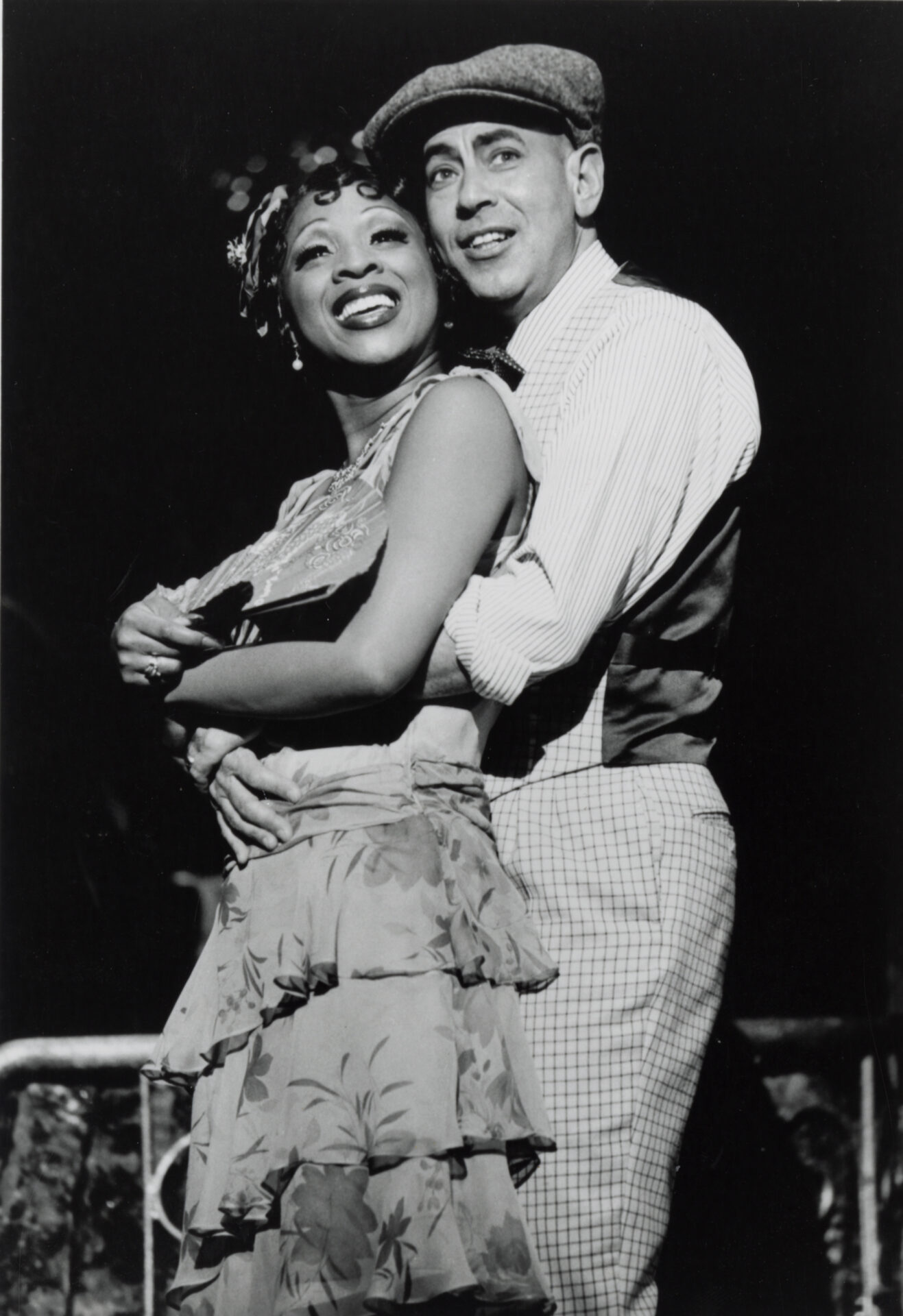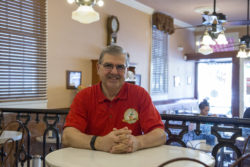Winter 2017
Voices of the City
The Historic New Orleans Collection oral histories spark WWNO series
Published: December 8, 2017
Last Updated: December 20, 2018
by Mark Cave
Since April 2014, The Historic New Orleans Collection (THNOC) has collaborated with WWNO, 89.9 FM, on the radio series NOLA Life Stories, which showcases interviews from THNOC’s oral history program. Unlike many public radio spots, there is no celebrity host and no clever banter between experts. NOLA Life Stories simply presents the interview subject reflecting on his or her life experiences in a relaxed and thoughtful way. The result is often poetic, sometimes comical, and always interesting—challenging and expanding listeners’ perspectives of the past.

Vernal Bagneris with Rosalind Brown in One Mo’Time.
WWNO producers Thomas Walsh and Sarah Holtz carefully weave music and other contextualizing audio into the selected narrative, setting the mood and pacing for each feature. Interview subjects have included local business leaders, politicians, musicians, media personalities, sports figures, burlesque dancers, writers, artists, a baker, and a riverboat captain.
The show’s content often mirrors the current priorities of THNOC’s oral history program. Recent episodes have drawn heavily from the Vieux Carré Memoir, an initiative to collect a wide range of personal narratives related to life and culture in the French Quarter in the twentieth century.
Sicilian immigrants and their descendants dominated the social landscape of the French Quarter at the turn of the twentieth century. In one episode Arthur Brocato, the grandson of the founder of iconic New Orleans ice cream parlor Angelo Brocato’s, reminisces about growing up in the French Quarter and working at the parlor on Ursulines Street. (The original shop opened in the 500 block of Ursulines in 1905 and was later moved to a larger location in the 600 block.) Recordings of the hustle and bustle at Brocato’s current location, 214 North Carrollton Avenue, are interspersed with Arthur’s memories, adding texture and mood to the episode.
After Brocato’s moved to North Carrollton in the 1970s, the baker Maurice Delechelle, an immigrant from France, took over the French Quarter storefront, opening Croissant d’Or. An episode featuring Delechelle documents his success in satisfying growing expectations for French pastries among tourists at both Croissant d’Or and La Marquise, his other bakery on Chartres Street. Delechelle discusses what he describes as the “croissant revolution” of the 1970s, during which croissants filled with jams and almond paste became popular. He also describes the artistic life in the Quarter at that time, comparing the neighborhood to Montmartre in Paris.

Arthur Brocato in Angelo Brocato’s ice cream parlor, 214 North Carrollton Avenue.
One of Delechelle’s loyal patrons, longtime street musician and artist Amzie Adams, was the focus of another NOLA Life Stories episode. Adams, a native of New Jersey, moved to New Orleans during the heyday of the hippie subculture in the late 1960s. The episode juxtaposes Adams’s experiences working for an underground newspaper in the Quarter with contemporary news coverage on the hippie lifestyle.
The Quarter has long attracted eccentrics and artists. Playwright, director, and performing artist Vernel Bagneris reminisces about how the members of the artists’ community in the Quarter supported each other. In 1978 Bagneris’s musical about black vaudeville performers in New Orleans in the 1920s, One Mo’ Time, premiered at the Toulouse Theatre. The following year the musical opened in New York at the off-Broadway theater Village Gate Downstairs, where it had a three-year run. In 2002 it had a short run on Broadway, at the Longacre Theatre. Bagneris’s episode is embellished with music from the production.
Music also sets the tone for an episode featuring the burlesque dancer Lisa “GiO” Suarez, who moved to the Quarter in the 1980s because, as she put it, she wanted “to bring back real striptease on Bourbon Street.” Suarez prided herself on the creativity of her performances: she dressed up as an electric guitar and performed to Jimmy Hendrix’s version of “The Star-Spangled Banner” and wore a soft-sculpture television on her head while she performed to theme songs from television. According to Suarez, the Perry Mason theme song is “the best stocking-removal song ever.”
Often the stories from our past are not dramatic narratives of disaster, war, protest, or survival. It is the everyday experiences that define a time and place. Through the oral history program, THNOC has been collecting the memories of New Orleanians who have left a mark on the city, and the NOLA Life Stories series shares them with the community in a fun and accessible way.
The full interviews from the Vieux Carré Memoir, and other oral history initiatives, are available to researchers at the Williams Research Center. The NOLA Life Stories episodes run approximately four to five minutes and air periodically on WWNO, 89.9 FM. They are all available to stream online at wwno.org/programs/nola-life-stories.

